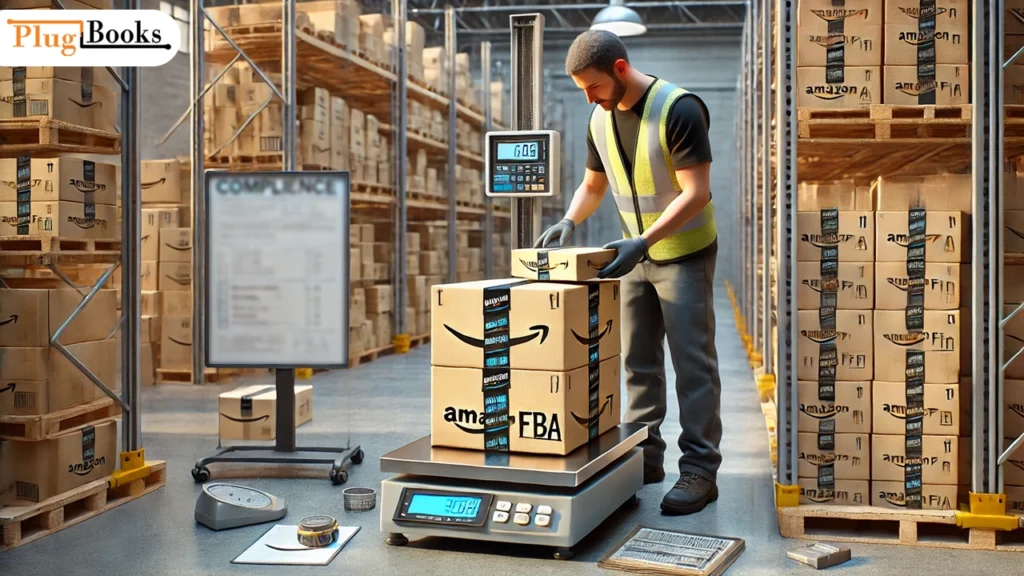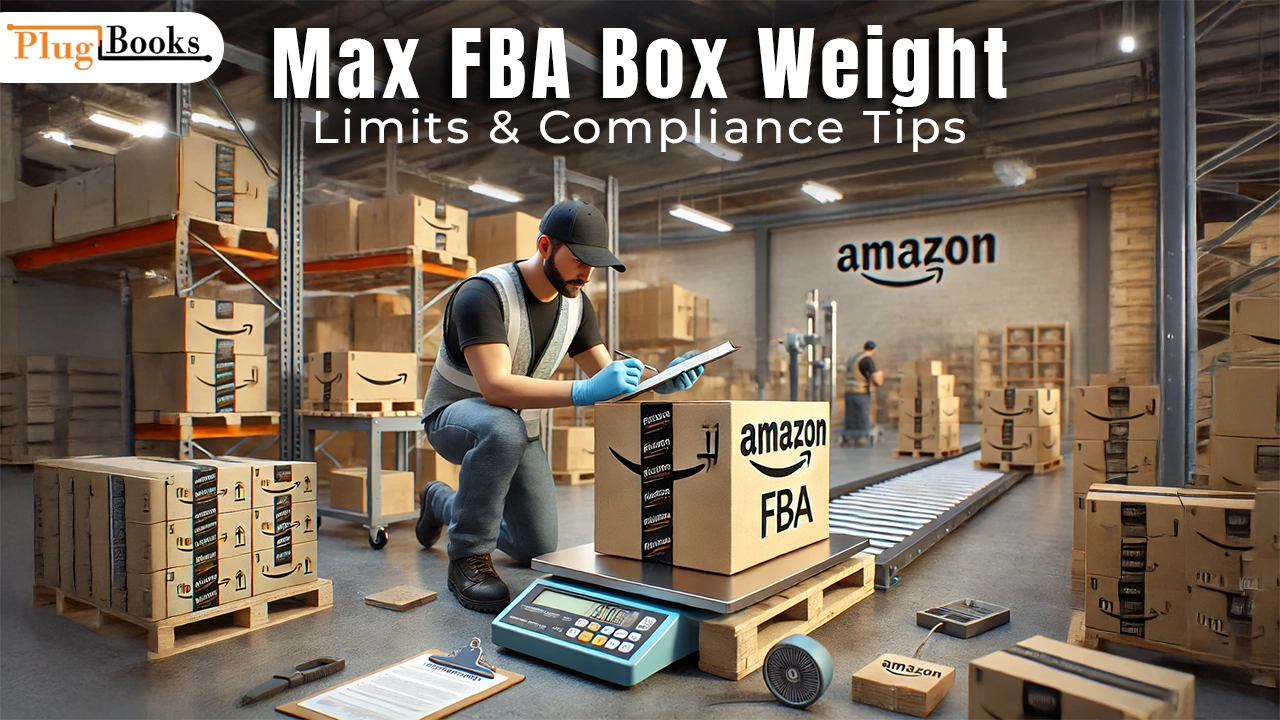Knowing the maximum max FBA box weight restriction may help you avoid excessive costs, shipping rejections, and compliance problems whether you sell Amazon FBA. To guarantee seamless shipping operations and warehouse safety, Amazon has rigorous weight and packing criteria.
What then is the highest box weight Amazon FBA might have? Let’s now explore the specifics.
The max fba box weight limit is what?
Amazon says that FBA shipments’ maximum box weight is 50 pounds (22.68 kg). There are some outlays, though:
- Boxes weighing more than fifty pounds have to be tagged on both sides with a “Team Lift” sticker.
- Over 100 lb boxes call for a “Mechanical Lift” label.
- Single objects weighing more than fifty pounds are permitted but must have suitable labels.
Overreaching these restrictions without appropriate labeling could result in processing delays, extra costs, or cargo rejection.
Why Does Amazon Enforce Box Weight Limits?
Amazon’s weight limits exist for efficiency and safety-related purposes:
- Warehouse Safety: For warehouse employees handling the cargo, overweight boxes might be dangerous.
- Faster Processing: Maintaining boxes within the weight limit guarantees fast handling and less delays.
- Avoiding Additional Fees: Overweight shipments run the danger of being returned to the sender or of incurring additional fees.
Advantages of following Amazon’s box weight restrictions
Following max FBA box weight limits can benefit FBA sellers in many different ways:
- Improved Shipping Efficiency: Reduced shipment delays and faster processing guaranteed by staying under weight limitations help to improve shipping efficiency.
- Reduced Shipping Costs: Overweight boxes might cause additional taxes; so, maintaining shipments compliant helps to save costs.
- Improved Performance Measures for Salesmen: Avoiding non-compliance problems keeps a positive seller reputation and helps to avoid disturbance of inventory control.
- Reduced Risk of Damage: Appropriate weight distribution and packing help to lower the chance of damage during transportation, therefore reducing the returns and refundable value.
- Improved Customer Satisfaction: Timely delivery of undamaged goods and timely delivery help to produce good customer reviews and more sales.

Amazon FBA Packaging Requirements
Apart from weight restrictions, Amazon follows particular packing guidelines to guarantee effective and safe handling of shipments. Adhering to the max FBA box weight is crucial to ensure smooth processing and prevent delays.
- Box Durability: Use premium, corrugated boxes that will survive handling and transit.
- Sealing and Taping: Strong packing tape will help to securely close all box openings, therefore preventing inadvertent openings.
- Padding and Cushioning: Using bubble wrap, air cushions, or paper, pad and cushion delicate objects to guard against damage.
- Poly Bags and Suffocation Warnings: Any item in poly bags has to include a suffocating warning if the bag is more than five inches.
- Label Placement: Shipping labels ought to be easily scannable and positioned on a level surface of the box to avoid seams or corners.
Ignoring these packing rules could cause delays, returns, or non-compliance fines.
Amazon FBA Shipping Requirements
Amazon has particular delivery criteria that merchants must adhere to guarantee seamless and compliant deliveries. Adhering to the max FBA box weight is crucial to ensure smooth processing and prevent delays.
- Carrier Selection: Send your product to fulfillment facilities using approved shipping providers or carriers contracted with Amazon.
- Box Dimensions: Unless the item inside is large and calls for it, make sure boxes on either side do not run more than 25 inches.
- Shipping Labeling: Every box needs a unique FBA shipping label created from Amazon’s Seller Central.
- Palletized Shipments: Larger shipments call for following Amazon’s pallet criteria, which include conventional pallet sizes and shrink-wrapping techniques.
- Tracking and Compliance: Following Amazon’s shipment dates and always offering reliable tracking data can help you to prevent delays.
Ignoring these shipment criteria might cause delays, inventory rejections, or extra expenses.

Tips to Stay Within Amazon’s Box Weight Limit
Use these best practices to guarantee your shipments match Amazon’s max FBA box weight policy:
- Weigh Every Box Before Shipping: Before forwarding any box to an Amazon fulfillment center, confirm its weight with a premium scale.
- Distribute Weight Evenly: Make sure even weight distribution to avoid imbalance problems while delivering several objects in one package.
- Use Strong, Lightweight Packaging: Choose robust but lightweight packaging materials to save needless weight using strong, light-weight packaging.
- Label Heavy Boxes Properly: Properly identify heavy boxes; if your box weighs more than fifty pounds, apply the necessary “Team Lift” or “Mechanical Lift” labels.
- Following Amazon’s packaging and shipping policies: It can help you to meet all FBA shipment criteria and prevent rejections and delays.
Conclusion:
Shipping hassle-free depends on knowing and obeying Amazon’s max FBA box weight restriction. Unless your goods fit for exceptions, keep your boxes within 50 lbs; always use the required labels for large shipments.
Maintaining a good selling experience on Amazon, avoiding extra costs, and ensuring more seamless delivery depend on your being compliant.
For more tips on optimizing your Amazon FBA shipping process, check out plugbooks.io.





One thought on “Max FBA Box Weight 2025: Limits & Compliance Tips”